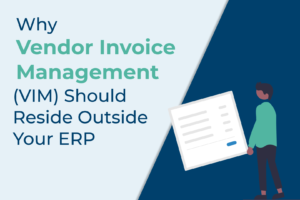O2C meets digitization
If you don’t know already, the order-to-cash (O2C) process is critical to any company. In fact, O2C is often a definitive part of success because it not only impacts better customer relationships, but improves payments, resource handling, and overall business management.
According to Hackett group’s 2020 working capital study, the average Days Sales Outstanding (DSO) for businesses is at its highest point in the past 10 years, with an estimated $1.2 trillion stuck in working capital alone.
What does this imply? Decision makers are realizing that automating only minute paper-based processes isn’t going to push your digitization where it needs to be. This is where O2C process automation comes in, giving companies a holistic approach to digitization.
O2C automation has allowed companies to reduce shipping errors, increase efficiency, fasten Accounts Receivable activities, facilitate payment cycles, and give more transparency into buyer transactions altogether. Let’s take a closer look and see how automation can enhance this process.
O2C automation with RPA
The Order-to-Cash cycle primarily headlines these critical aspects:
Onboarding customers and credit management
This includes sending quotations or proposals to potential buyers. It can also extend to negotiations to arrive at a favorable understanding for both buyer and seller. Customer onboarding can include necessary credit management as well, to ensure each account is appropriately managed.
Customers today expect digitally enhanced experiences which can affect the customer’s willingness to maintain a long-term relationship. According to a study, returning customers spend 67% more than new customers while making a recurring purchase. Fortunately, managing consumer data is a lot easier when done in order management systems. Here, onboarding becomes systematic. This in turn lets you categorize data more efficiently to reduce the hassle of processing customer orders and credit management.
Purchase order and sales order handling
An order is officially placed when a buyer submits a purchase order (PO) procuring the products or services offered. A sales order gets created as a response to the purchase order, which is generally an internal reference document. In summary, documentation plays an important part in accountability and compliance.
Manual data processing is in itself a slow process which. Any errors that arise can lead to twice as many delays for existing orders. With RPA, the entire PO to SO process can be automated to eliminate the need for manual data entry or document creation at any point. As a result, you have minimal wait times, increased data accuracy, and an efficient document management procedure that makes compliance easier.
To learn more, read our blog post on purchase order to sales order processing.
Shipping and invoicing
Next, products are shipped and delivered to the buyer along with relevant shipping and delivery documents,such as Advance Shipping Notices (ASNs) and delivery notes. The completion of the delivery is marked with an invoice, which reconciles the purchase demanded, with the goods and services that were delivered.
As you might imagine, this invoice is an essential document for both the buyer and seller. Digital invoicing uses automation to make invoice processing easier especially for the Accounts Receivable department. An automated trigger processes the invoice right on time soon after delivery, clearing quicker payments thereafter.
Apart from invoicing, all delivery-related documents can be updated to the buyer’s warehouse system automatically ,reducing wait times and improving inventory management. With real-time acknowledgements using technology like electronic signatures, updates can be entered into the ERP system directly and instantly. The process no longer requires human intervention.
Payments and customer retention
The O2C cycle doesn’t end with payments, but instead resets. At this point, it’s up to the vendor to maintain a healthy long-term relationship with the buyer. This can be done through better customer support, competitive pricing, and faster deliveries.
When the entire O2C cycle is optimized, payments subsequently take less time. The benefits of this include leads better allocation of resources and shorter cycle durations.
What does Symtrax offer?
O2C boils down to two important factors.Each of these relies heavily relies on the other to , and completely influences the outcome of the O2C process.
- Order Management overlooks everything from onboarding to order creation and shipping.
- Accounts Receivable starts from invoice processing and ends at payment collection. Its primary role of is to reduce the DSO as much as possible.
Problems arise when there’s no coherency between these two critical parts of the process. Although siloing can create friction between the two, they both need to work together.
If poor data management and input errors aren’t caught early on, they can lead to tremendous order fulfillment delays . One thing leads to another: payments become unpredictable, the vendor-buyer relationship suffers, and DSO increases hampering hampers cash flow.
No one wants that.
Symtrax offers Compleo Hybrid, an AI-driven digitization software that focuses on business optimization.
- With certified connectors, all data is captured directly from your ERP/billing systems without disrupting your existing O2C setup.
- Comprehensive data handling and storage makes referencing and retrieval faster. You can access documents from anywhere, at any time, and share them easily with all stakeholders.
- Real-time acknowledgments of order, shipping, and delivery documents help facilitate the entire process without delays.
Because of this:
- All documents are processed automatically, including quotations, purchase orders, sales orders, delivery notes, and invoices. None of these require manual input at any point during this workflow.
- Document and product delivery is more accurate, improving customer satisfaction, retention, and brand value.
- All formats are compatible with global EDI requirements to accommodate information exchange. This ensures both external and internal compliance.
- DSO is reduced.
Check out our Order to Cash solution.


